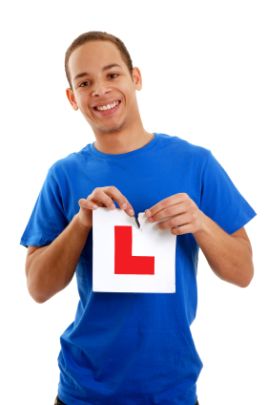Professional driving instructors
When you learn to drive, you have the choice who teaches you. The majority of people decide to learn through a professional driving instructor and often through a major school of motoring.
This is not strictly necessary, because as long as the person teaching you is over 21 and has held a full British licence for three years or more then it is not mandatory. However, it is recommended because the professional driving instructor does it for a living and has the expertise and know how if they are a good instructor to ensure your safety and that you learn exactly what you need to so that you are a safe driver and fully prepared when it comes to taking your test.
Although there is a significant cost for driving lessons, finding a good instructor will make your lessons more enjoyable, go at the pace that is right for you, and make you a confident and good driver as a result.
Anyone who gives driving lessons for payment has to be registered with the DSA which is the Driving Standards Agency, and they will display an ADI - approved driving instructor - identification certificate on the windscreen of the car that you learn in. There are examinations of a high standard in place in order to become an ADI, so again this should give you the security that you are learning in good hands.
In terms of choosing a professional driving instructor, there are many ways to do this. Some will go for a major school of motoring, whilst others will research driving instructors that perhaps use the same vehicle that they will be driving once they have passed their test (either a car you have bought for when you pass the test or perhaps a parents car that you will be able to use once you have passed).
For many, word of mouth recommendation from friends is what will sway you one way or the other. Ultimately it is a personal choice who you decide to have lessons with - but whoever you choose, good luck and enjoy your driving!
Related Articles...
Speed limits on motorways
The speed limits on the motorway are something that you will no doubt be aware of for cars, but is the limit the same for a motorbike? And what about if you are bus or a coach driver?
Another...
What time of day should I book my driving test?
This is entirely up to you and so there is no right or wrong answer to this.
Many of us function either better in the morning or in the afternoon. If
you are a morning person then you will...
Your car and the lights on it
We are all used to seeing cars in the dark, and also seeing their indicators in the day to communicate to other car drivers. But what must you ensure with regard to the lighting of your...
How does the hazard perception test work
The hazard perception test is the second part of the driving theory test, and it was introduced towards the end of 2002.
There are two parts to the theory test, and the second part of the test...
Show me tell me test
If you've not heard of the "show me tell me" test, then this is something
that happens at the start of the driving practical test as opposed to on the
theory test. They ask one of each of the two...
What to do at level crossings
When you are learning to drive you may well not come across a level crossing, depending where you live. But as a driver you certainly will come across level crossings and will need to know how to...
Driving Theory Test
Until relatively recently in driving history, there was no theory test. From the time the first person passed a driving test in the UK in 1935 through to 1996, there was no separate theory test. ...
What different cats eyes mean
There are market studs, which are usually referred to as multi-coloured studs or even more usually as cats eyes, along certain areas of motorways and optionally on other parts of motorways...
Oil in your car and oil pressure
Oil is not something that you might think is essential to the operation of a car, but infact it is. Oil acts as a lubricant for the moving parts such as the moving parts of the engine, and it is...
Using the foot controls in an automatic
When driving an automatic car, there is one less pedal to think about: there is no clutch pedal so the ABC of accelerator, brake, clutch becomes instead simply accelerator and brake.
That's...
Back to home page of driving theory test questions

